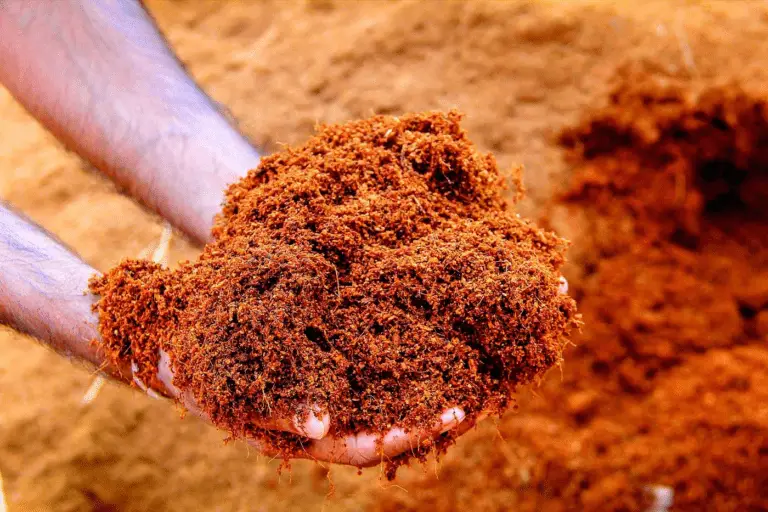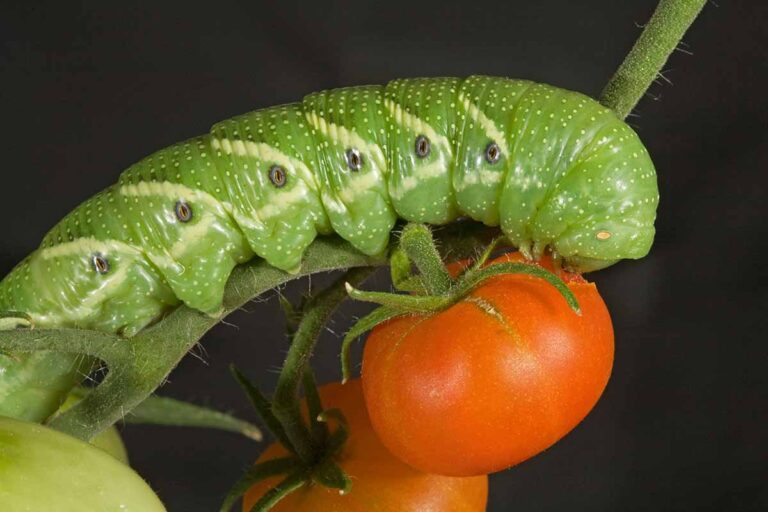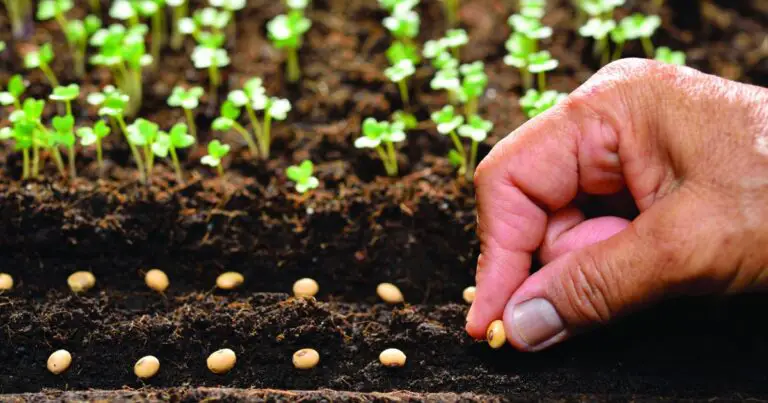Prickly Pear Cactus Propagation Pointers: the ultimate guide
Table of Contents
Key Factors for Successful prickly pear cactus Propagation
To successfully propagate prickly pear cactus, several key factors must be taken into consideration. One crucial aspect is selecting the right variety of prickly pear cactus for propagation. Different varieties have varying growth patterns, resilience to certain environmental conditions, and aesthetic characteristics. Carefully choosing a variety that aligns with your climate and gardening goals is essential for successful propagation.
Additionally, ensuring proper soil preparation is vital for the healthy development of prickly pear cactus plants. Cacti thrive in well-draining soil with good aeration to prevent root rot and other moisture-related issues. By preparing the soil with the appropriate nutrients and texture, you provide an optimal growing medium for the cactus plants to establish strong roots and grow vigorously.

Selecting the Right Prickly Pear Cactus Variety
When selecting the right prickly pear cactus variety for your propagation project, it is essential to consider several key factors. Different varieties of prickly pear cacti exhibit unique characteristics, such as growth habits, fruit production, and spines, which can influence your choice. Some varieties are known for their vibrant blooms, while others may be prized for their sweet and flavorful fruits. Additionally, certain varieties are more tolerant of specific growing conditions, such as temperature fluctuations or soil types. By understanding the specific traits of each variety, you can choose the one that best aligns with your propagation goals and growing environment.
It is recommended to research various prickly pear cactus varieties and their attributes before making a selection. Consider factors such as the available space for planting, desired aesthetic appeal, and intended use of the cactus, whether for ornamental purposes or fruit production. Consulting with local nurseries or botanical experts can also provide valuable insights into the best prickly pear cactus varieties suited to your region’s climate and soil conditions. Ultimately, selecting the right variety is a crucial first step towards successful cactus propagation and ensuring a thriving and bountiful garden.
Preparing the Soil for Planting
To prepare the soil for planting prickly pear cactus, it is crucial to ensure that the growing medium is well-draining to prevent waterlogged conditions that can lead to root rot. Opt for a sandy or rocky soil mix with minimal organic matter to mimic the cactus’s natural habitat. Incorporating perlite or gravel can help improve drainage and prevent water retention, promoting healthy root development. Additionally, check the pH levels of the soil to ensure it falls within the slightly acidic to neutral range, around 6.0 to 7.0, as prickly pear cactus thrives in these conditions.
Adequate soil preparation is essential for the successful growth of prickly pear cactus, as it sets the foundation for the plant’s overall health and development. Before planting, loosen the soil to a depth of at least 12 inches to facilitate root penetration and nutrient uptake. Remove any rocks, debris, or weeds that may impede cactus growth, ensuring a clean and clear planting site. Take into account the cactus’s preference for well-drained, nutrient-poor soils and avoid overly rich or dense soil mixes that can lead to issues such as root suffocation. By carefully preparing the soil, you can provide an optimal environment for your prickly pear cactus to thrive and flourish.
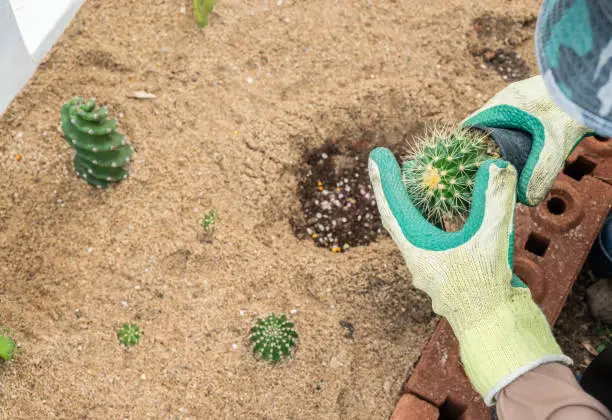
Choosing the Best Planting Location
When selecting the best planting location for your prickly pear cactus, it’s crucial to consider the sunlight requirements of these desert plants. Prickly pears thrive in full sun conditions, so opt for a spot in your garden that receives ample sunlight throughout the day. Additionally, make sure the location has good air circulation to prevent the buildup of moisture that can lead to fungal diseases. A well-draining soil is also essential for the successful growth of prickly pear cacti, as they are prone to root rot in soggy conditions.
Furthermore, take into account the space needed for the prickly pear cactus variety you’ve chosen. Some varieties can spread out quite a bit, so ensure that there is enough room for the cactus to grow without being crowded by other plants. Consider the mature size of the cactus and plan accordingly to give it the space it needs to thrive. By carefully selecting a sunny, well-drained location with ample space for growth, you’ll set your prickly pear cactus up for success in your garden.
Timing for Propagation
Timing is crucial when it comes to propagating prickly pear cactus successfully. The best time to propagate these desert gems is in the spring when they are coming out of dormancy and entering their active growing phase. During this time, the cacti are more responsive to propagation efforts, leading to higher success rates in establishing new plants. Additionally, avoiding propagation during extreme temperature fluctuations or during the dormant winter months is advisable to give the cactus the best chance at thriving.
When choosing the timing for propagation, it’s essential to consider the specific variety of prickly pear cactus you are working with, as different species may have varying preferences for the optimal time for propagation. Researching the particular traits and growth patterns of your cactus variety can provide valuable insight into the ideal timing for successful propagation. By aligning your propagation efforts with the natural growth cycle of the prickly pear cactus, you can maximize the chances of creating healthy new plants that will flourish in your garden or landscape.
| Propagation Method | Timing |
|---|---|
| Seed Propagation | Best done in spring or early summer when temperatures are consistently warm. |
| Pad Propagation | Can be done year-round in regions with mild winters, but spring or summer is optimal. |
| Cutting Propagation | Ideally performed in late spring or early summer when cacti are actively growing. |
These timings provide the best conditions for successful propagation of prickly pear cactus through various methods. Adjustments may be necessary depending on the specific climate and growing conditions in your region.
Harvesting the Prickly Pear Cactus Pads
When harvesting prickly pear cactus pads for propagation, it is crucial to choose mature, healthy pads that are free from any signs of damage or disease. To harvest, carefully cut the pads at an angle using a sharp, clean knife, ensuring a clean cut that minimizes potential damage. Avoid touching the pads directly with your hands to prevent any damage to the protective layer on the surface.
After harvesting, allow the cut pads to air dry in a shaded area for a few days to allow the cut end to callus and reduce the risk of rotting. Once the pads have calloused, they are ready for planting in well-draining soil to begin the propagation process. Properly harvested and prepared cactus pads have a higher success rate in establishing new growth and thriving in their new environment.

Preparing the Pads for Planting
Ensure the pads you select for planting are mature and healthy, ideally at least one year old with a firm texture. To prepare the pads, allow them to dry for a few days in a shaded area to form a callus, which helps prevent rotting once planted.
Next, cut the pads into planting sections, ensuring each piece has a calloused end. This step is crucial to avoid moisture-related issues during the initial stages of growth. Before planting, let the cut ends dry for another day to further prevent potential infections.
Ensuring Proper Drainage for Growth
Proper drainage is essential for the successful growth of prickly pear cacti. Waterlogged soil can lead to root rot and other plant diseases, ultimately hindering the plant’s development. To ensure adequate drainage, it is crucial to use well-draining soil mixtures, such as cactus potting mix combined with perlite or coarse sand. These components help prevent water from pooling around the roots, allowing for optimal air circulation and moisture regulation. Additionally, incorporating gravel or rocks at the bottom of the planting container can further enhance drainage and prevent waterlogging.
Inadequate drainage can stunt the growth of prickly pear cacti and make them susceptible to various stressors. By addressing drainage issues early on, gardeners can create a conducive environment for their cacti to thrive. Monitoring the soil moisture levels regularly and adjusting watering practices accordingly can help maintain the ideal growing conditions for these resilient desert plants. Remember, healthy root systems are the foundation for robust growth and vibrant blooms, so investing in proper drainage is a fundamental step towards successful propagation of prickly pear cacti.
Watering Techniques for Successful Propagation
To ensure successful propagation of prickly pear cactus, it is crucial to understand the right watering techniques for these resilient plants. Overwatering can lead to root rot, while underwatering can stunt growth and development. Prickly pear cacti prefer well-draining soil, so it is essential to water deeply but infrequently to mimic their natural habitat.
During the growing season, which typically spans from spring to fall, water the cacti thoroughly about once every two to three weeks, allowing the soil to dry out between waterings. In the winter, reduce watering frequency to prevent waterlogged soil. Always monitor the moisture levels in the soil and adjust your watering routine based on the specific needs of your prickly pear cactus variety.
Fertilizing the Cactus Plants
The key to successfully fertilizing cactus plants lies in understanding their unique nutritional needs. Cacti are adapted to thrive in nutrient-poor environments, making them sensitive to overfeeding. When fertilizing your cactus plants, it’s crucial to use a balanced, water-soluble fertilizer specifically formulated for cacti and succulents. Avoid high-nitrogen fertilizers that can promote excessive growth and lead to weak, unhealthy plants. Instead, opt for a fertilizer with a higher phosphorus content to encourage strong root development and vibrant blooms.
To ensure optimal growth and health, fertilize your cactus plants sparingly during the growing season, typically from spring to early fall. Remember that less is often more when it comes to feeding cacti. Dilute the fertilizer to half or quarter strength and apply it every 4-6 weeks. Always follow the manufacturer’s recommendations and adjust the feeding schedule based on the plant’s response. By providing the right nutrients in moderation, you can help your cactus plants thrive and flourish in your garden or indoor space.
Monitoring for Pests and Diseases
To effectively monitor for pests and diseases on your prickly pear cactus plants, it is essential to perform regular inspections. Check both the tops and undersides of the pads for any signs of infestation or infection. Look out for common pests such as aphids, spider mites, and cochineal scale, which can damage the cactus plants. Additionally, keep an eye out for any symptoms of fungal or bacterial diseases, including discoloration, mold growth, or wilting.
Early detection is key in preventing pest and disease issues from spreading and causing significant damage to your prickly pear cactus plants. If you notice any abnormalities during your inspections, promptly take action to address the problem. This can involve removing affected pads, applying appropriate treatments, or seeking advice from a gardening expert to ensure the health and vitality of your cactus plants. Regular monitoring and swift intervention can help maintain the overall well-being of your prickly pear cactus garden.
| Pest/Disease | Symptoms | Prevention/Treatment |
|---|---|---|
| Scale Insects | Presence of small, oval-shaped insects on | – Regularly inspect cacti for signs of scale insects. – Prune and dispose of heavily infested pads. – Apply insecticidal soap or neem oil according to package instructions. |
| pads or joints. | ||
| Spider Mites | Fine webbing on pads, yellow stippling on | – Increase humidity to discourage spider mite infestation. – Rinse plants with a strong stream of water to dislodge mites. – Apply insecticidal soap or neem oil as needed. |
| leaves, and leaves may become discolored | ||
| or wilted. | ||
| Mealybugs | White, cottony masses on pads or joints. | – Remove mealybugs by hand or with a soft brush. – Apply rubbing alcohol directly to affected areas with a cotton swab. |
| – Apply insecticidal soap or neem oil to control severe infestations. | ||
| Root Rot | Yellowing or wilting of pads, blackened | – Ensure well-draining soil and avoid overwatering. – Allow soil to dry out between waterings. – Remove and discard affected pads. |
| and mushy roots. | – Apply a fungicide formulated for cacti according to package instructions. | |
| Bacterial Rot | Soft, dark, water-soaked areas on pads or | – Avoid overwatering and ensure good air circulation around plants. – Remove and discard affected pads to prevent spread. |
| joints, foul odor may be present. | – Apply a copper-based fungicide to affected areas according to package instructions. | |
| Sunburn | Pads or joints appear bleached or develop | – Provide afternoon shade or shade cloth during periods of intense sunlight. – Gradually acclimate plants to increased sunlight. |
| brown, sunken spots. | – Avoid watering during the hottest part of the day to prevent water droplets from magnifying sunlight and causing burns. |
Regular monitoring and prompt intervention are key to preventing and controlling pests and diseases in prickly pear cactus. Adjust preventive measures based on the severity of infestations and environmental conditions.
Pruning and Maintenance Tips
To keep your prickly pear cactus healthy and vibrant, regular pruning and maintenance are essential. Pruning helps promote new growth, shape the cactus, and remove any diseased or damaged parts. Use clean, sharp pruning shears to make precise cuts without crushing the plant tissue. Remove any dead or yellowing pads, as well as any spines or glochids that may hinder growth or be a safety hazard. Regular maintenance tasks include checking for pests and diseases, inspecting for signs of nutrient deficiencies, and ensuring the cactus has proper support and protection from harsh weather conditions.
In addition to routine pruning and maintenance, monitoring the overall health of your prickly pear cactus is crucial for its longevity. Keep an eye out for any changes in growth patterns, coloration, or texture of the pads. Address any issues promptly to prevent them from escalating and affecting the entire plant. Regularly fertilize the cactus during the growing season to provide essential nutrients for optimal growth. Water the plant sparingly but deeply, allowing the soil to dry out between waterings to prevent root rot. By incorporating these pruning and maintenance tips into your cactus care routine, you can ensure a thriving and resilient plant for years to come.
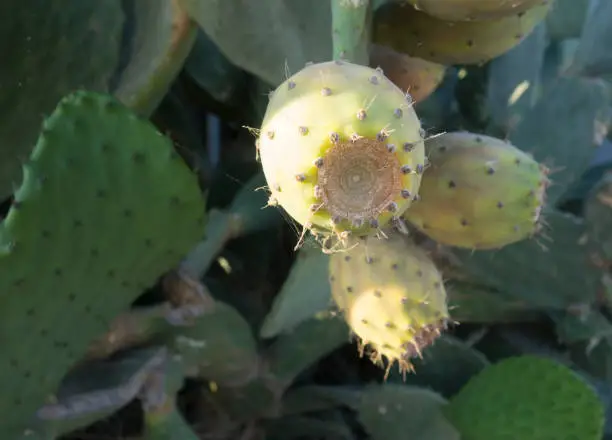
Supporting Growth with Trellises or Stakes
To help your prickly pear cactus thrive and reach its full potential, consider using trellises or stakes to support its growth. Trellises provide a framework for the plant to climb and spread, preventing it from sprawling on the ground and reducing the risk of damage. Stakes can also be used to support the cactus and guide its growth in a specific direction, promoting a healthier and more organized appearance. By utilizing these support structures, you can enhance the overall health and aesthetics of your prickly pear cactus while optimizing its growing conditions.
When selecting trellises or stakes for your prickly pear cactus, ensure they are durable and appropriately sized to accommodate the plant’s growth. Position the trellises or stakes near the base of the cactus and gently train the stems or pads to climb or lean on them as they develop. Regularly check the stability of the support structures and adjust as needed to prevent any strain on the plant. With proper support in place, your prickly pear cactus will have the necessary assistance to grow upright and strong, showcasing its beauty in your garden or landscape.
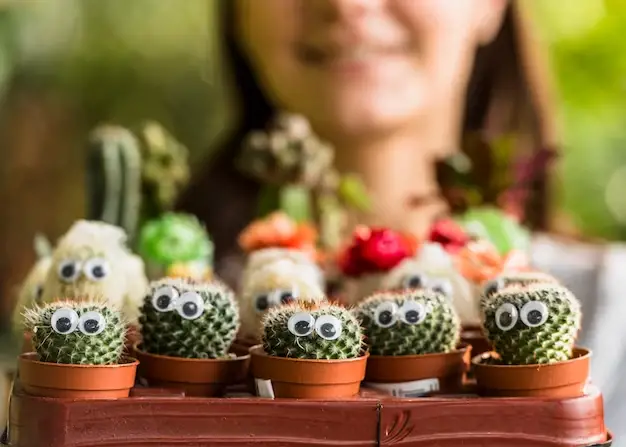
Transplanting Young Cactus Plants
When it comes to transplanting young cactus plants, it is crucial to handle them with care to ensure their successful adaptation to a new environment. Cacti have shallow root systems that can be sensitive to disturbances, so it is recommended to gently loosen the soil around the plant before carefully lifting it out of its current container or location. Avoid pulling on the plant itself, as this can damage the roots and hinder growth. Once the cactus is out of the soil, gently shake off any excess dirt and transplant it into a new container or prepared planting site with well-draining soil.
After transplanting, it is important to water the cactus sparingly and allow the roots to establish themselves in the new environment. Avoid overwatering, as this can lead to root rot in cacti. Gradually increase watering frequency as the plant shows signs of new growth and acclimation to the transplant. Keep the cactus in a location with adequate sunlight exposure and monitor its progress closely to ensure a successful transition. By following these steps, you can help your young cactus plants thrive in their new home.
Troubleshooting Common Propagation Issues
When propagating prickly pear cacti, encountering common issues is inevitable. One such problem is overwatering, which can lead to root rot and hinder growth. To combat this, ensure the soil is well-draining and water only when the top layer feels dry to the touch. Additionally, inadequate sunlight exposure can result in weak or etiolated plants. Be sure to place your cacti in a location where they receive plenty of sunlight to promote healthy growth.
Another issue you may face is pests infesting your cactus plants. Common pests include scale insects and mealybugs, which can damage the pads and hinder propagation. To address this, regularly inspect your plants for any signs of pest infestation and treat them promptly with insecticidal soap or neem oil. By staying proactive and addressing common propagation issues, you can ensure the successful growth and development of your prickly pear cacti.
Celebrating Successes in Cactus Propagation
Celebrating successes in cactus propagation is a gratifying moment for any gardener. Witnessing the fruits of your labor as vibrant prickly pear cacti thrive and flourish brings a sense of accomplishment and pride. Whether you are a seasoned enthusiast or a novice gardener, the journey from propagation to a healthy cactus plant is a rewarding experience that highlights your dedication and expertise in nurturing these unique desert beauties.
The vibrant hues of the cactus blooms, the resilience of the succulent pads, and the intricate patterns of the spines all serve as testaments to your care and attention to detail throughout the propagation process. Each successful cactus plant stands as a living reminder of your passion for gardening and your ability to cultivate life in even the harshest of environments. As you admire your flourishing prickly pear cacti, take a moment to bask in the joy of your achievements and revel in the beauty of nature’s resilience under your thoughtful guidance.
Can I propagate cactus indoors?
Yes, you can propagate cactus indoors as long as they receive adequate sunlight and proper care.
How often should I water my propagated cactus plants?
It is important to water cactus plants sparingly, allowing the soil to dry out between waterings to prevent root rot.
Can I propagate cactus from seeds?
Yes, cactus can be propagated from seeds, but it is a slower process compared to propagating from pads or cuttings.
What are some common pests and diseases that may affect cactus plants during propagation?
Common pests and diseases include mealybugs, spider mites, and root rot. It is important to monitor your plants regularly and take necessary precautions to prevent infestations.
How can I tell if my cactus plants are receiving enough sunlight?
Cactus plants require plenty of sunlight to thrive. If your plants start to become pale or stretched out, it may indicate they are not receiving enough sunlight.
When is the best time to transplant young cactus plants?
It is best to transplant young cactus plants during the spring or early summer when they are actively growing and can establish themselves in their new location more easily.

Beck Wakeford is a dedicated writer at SouthElMonteHydroponics, with a fervent enthusiasm for agriculture and technological innovation. Armed with a degree in Agricultural Engineering from a leading university, Beck specializes in hydroponic systems design, automation, and optimization. Their passion for merging traditional farming with cutting-edge technology drives them to explore novel solutions for sustainable food production. Beck’s expertise and keen interest in the intersection of engineering and agriculture make them a valuable asset in the quest for efficient and eco-friendly farming practices. Through their writing, Beck aims to inspire others to embrace the potential of hydroponics in shaping a more sustainable future.


